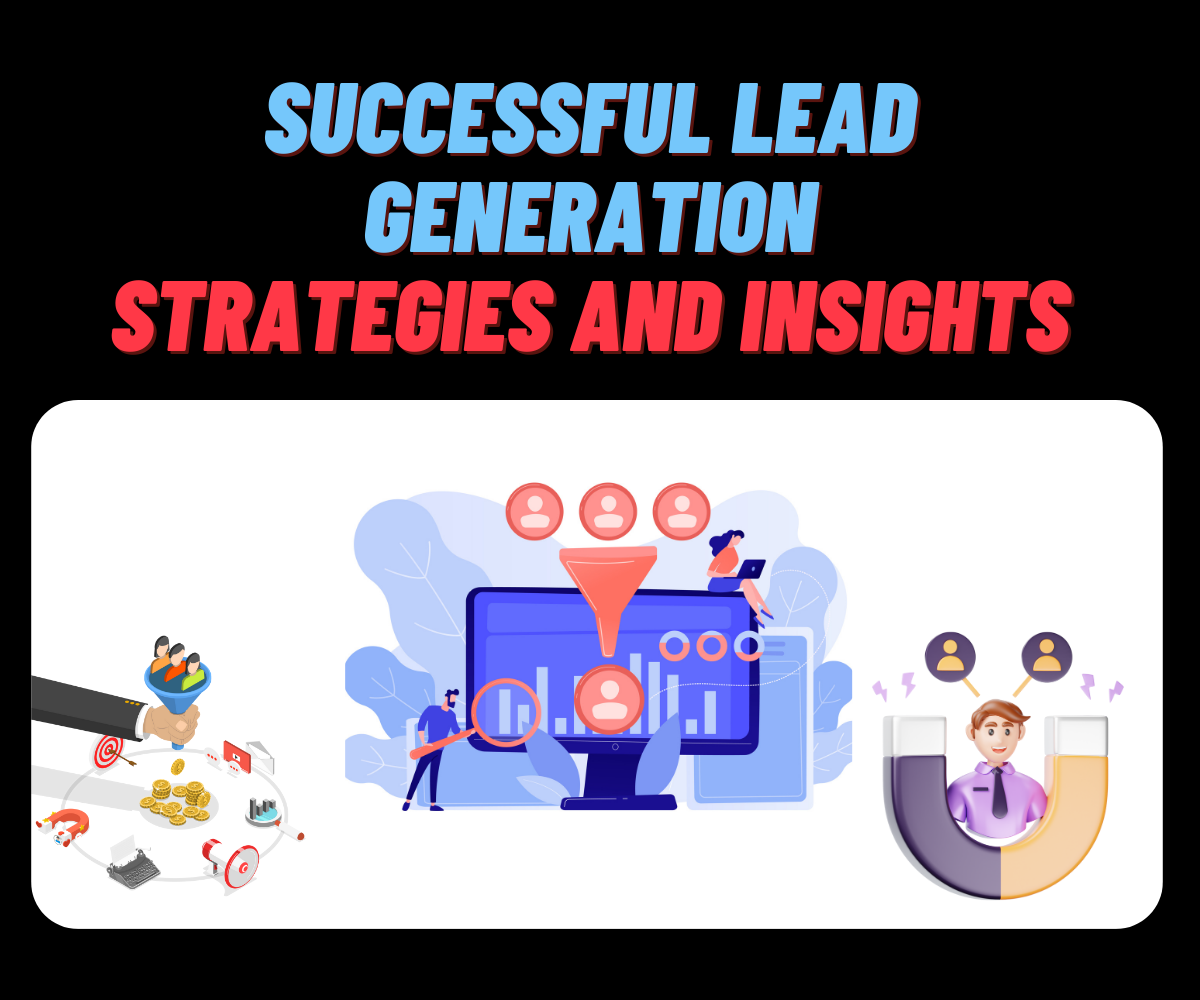The Definitive Guide to Successful Lead Generation

The Ultimate Guide to Effective Lead Generation: Strategies and Tips
In the rapidly evolving landscape of Digital marketing, effective lead generation is the cornerstone of success for businesses seeking to expand their customer base and boost revenue.
Generating quality leads requires a strategic approach that combines creativity, data-driven insights, and a deep understanding of your target audience. In this comprehensive guide, we’ll explore proven strategies and practical tips to help you master the art of lead generation.
1. Understand Your Target Audience
Before embarking on any lead generation efforts, it’s crucial to understand your target audience inside out. Conduct thorough market research to identify their pain points, needs, behaviors, and preferences. This information will serve as the foundation for crafting compelling content and offers that resonate with your audience.
Why Understanding Your Target Audience Matters:
- Relevance: When you understand your audience, you can create content and offers that are relevant to their interests and needs. This relevance increases the likelihood of capturing their attention and engaging them.
- Personalization: Personalized experiences resonate with consumers. By knowing your audience, you can tailor your messaging to speak directly to them, making them feel understood and valued.
- Efficiency: A well-defined target audience helps you focus your efforts on the right people, saving time and resources that might otherwise be wasted on uninterested individuals.
- Higher Conversions: When your marketing messages resonate with your audience, your conversion rates improve. You’re more likely to convert leads into paying customers when your offerings align with their desires.
How to Understand Your Target Audience:
- Conduct market research. Utilize tools like surveys, focus groups, and online analytics to gather data about your audience. Understand their demographics, interests, challenges, and behavior patterns.
- Create Buyer Personas. Develop detailed buyer personas that represent different segments of your audience. A persona includes information such as age, gender, job role, goals, challenges, and preferred communication channels.
- Leverage Analytics. Use website and social media analytics to gain insights into your audience’s online behavior. Track which content they engage with most and where they spend the most time.
- Stay Updated. Audience preferences can change over time, so make it a practice to regularly revisit your research and adjust your strategies accordingly.
Putting It Into Practice:
Let’s say you’re an artist running a fashion brand with an art imprint, like NoLogo Racing. Your target audience might include young adults (18-30) who are interested in urban fashion, street art, and individualistic style. By understanding this audience, you can create content that showcases your brand’s uniqueness, utilizes street art elements, and speaks directly to the values of individuality and creativity.
2. Craft Compelling Content
Content is the heart of lead generation. Create high-quality, relevant, and valuable content that addresses the challenges and questions your target audience has. This could include blog posts, ebooks, infographics, videos, and more. Content should showcase your expertise and provide solutions to attract and engage potential leads.
Compelling content is content that speaks directly to your audience’s needs, interests, and pain points. It provides value, educates, entertains, or solves a problem. When your audience finds your content valuable, they are more likely to engage with it, share it, and consider your brand as a trusted resource.
3. Utilize Multiple Channels
Diversify your lead generation efforts by utilizing multiple channels. This includes social media platforms, search engine optimization (SEO), email marketing, paid advertising, webinars, and more. Each channel offers a unique opportunity to connect with your audience and capture leads at different stages of the customer journey.
4. Optimize Landing Pages
Landing pages are critical for converting visitors into leads. Design landing pages with a clear and compelling value proposition, concise forms, and persuasive call-to-action (CTA) buttons. Test different elements to optimize conversion rates and capture valuable information from your prospects.
5. Offer Valuable Lead Magnets
A lead magnet is an irresistible offer that entices visitors to provide their contact information in exchange for valuable content. This could be an ebook, checklist, webinar, or free trial. Ensure that your lead magnet is closely aligned with your audience’s interests and needs.
6. Implement A/B Testing
A/B testing involves creating variations of your content, landing pages, or CTAs to determine which performs better. Test different headlines, images, colors, and messaging to optimize your lead generation strategy based on data-driven insights.
7. Leverage Social Proof
Highlighting positive reviews, testimonials, and case studies can significantly boost your credibility and trustworthiness. When potential leads see real-world examples of how your products or services have helped others, they’ll be more likely to engage with your brand.
8. Personalize Communication
Personalization is key to establishing meaningful connections with your leads. Segment your audience based on demographics, behaviors, and preferences, and tailor your communication to provide relevant and personalized experiences that resonate with each segment.
9. Implement Marketing Automation
Marketing automation tools can streamline your lead nurturing process. Set up automated workflows that deliver relevant content to leads based on their interactions with your brand. This keeps your leads engaged and moves them closer to making a purchase.
10. Analyze and Iterate
Regularly analyze your lead generation efforts to identify what’s working and what isn’t. Track key metrics such as conversion rates, click-through rates, and lead quality. Use this data to refine your strategies and make informed decisions for continuous improvement.
Conclusion
Effective lead generation is a dynamic process that requires a blend of creativity, data analysis, and strategic planning. By understanding your audience, crafting compelling content, and utilizing a variety of channels, you can create a lead generation strategy that drives growth and success for your business. Keep in mind that the digital landscape is constantly evolving, so be open to adapting your strategies to stay ahead of the curve and consistently capture high-quality leads.
Contact Lead generation service now.